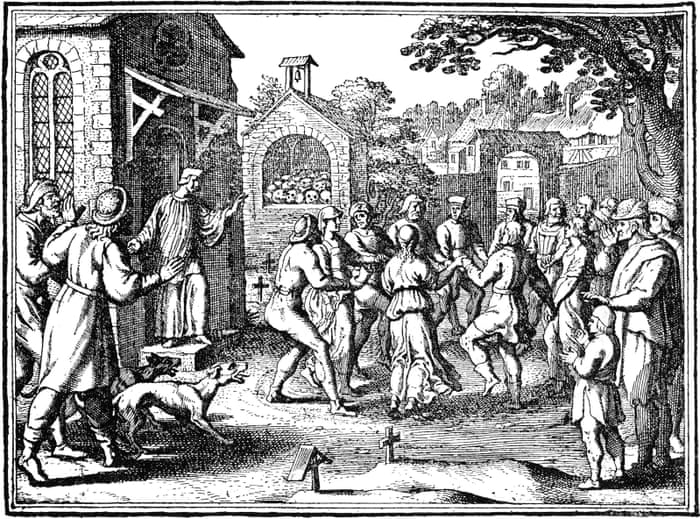Dance ’til you’re dead
How do you make a napkin dance? You put a little boogie in it. 16th century Frau Troffea found a little boogie in her when she spontaneously started dancing in the summer of 1518. This was the beginning to an almost month long disco-fest that involved between 50 to 400 people dancing to death.
Here’s the interesting take on the story. The outbreak was thought to have started in Strasbourg, Alsace, a little city in modern-day France, wherein our aforementioned dame began fervently dancing. Keeping up her dance marathon for nearly a week, she was then joined by nearly three-dozen other dancers and soon the dancing-fever afflicted what seemed to be hundreds of people.
With no possible explanation for the transpiring events, local physicians chalked the disease up to “hot blood” and figured those affected would simply “gyrate” the fever away.
This was not the case as an estimated 400 people were thought to have dropped dead from heart attacks, heat exhaustion, or strokes from the sheer absurd amount of time they had been dancing, with some having danced for weeks on end.
This nightmarish disco lasted for a few months with the last case in the region being reported in September of 1518. But just what really happened in those fateful months of raucous romping?
While the dancing part of the story was well documented by the Strasbourg City Council, the actual number of fatalities or whether anyone had actually died of the dancing plague was never mentioned.
However, other accounts such as word of mouth and historical documents written after the event noted that up to 15 people died per day as a result of this dancing mania.
It is also important to note that Strasbourg was not the only city to record such an event. Other European countries cite similar dancing outbreaks–though not nearly as large or “deadly” as the one in Strasbourg. Contemporary explanations included “hot blood” and demonic possessions, but what are the modern day theories?
One basic explanation is that they were simply dancing as a result of their religious sect hoping to garner divine attention through the means of expressive dance.
Another more interesting explanation involves food poisoning. At the time, bread was a staple food, with rye bread at the top of the list. Ergot fungi typically grows on rye and is attributed to producing convulsions and hallucinations. However, the effects of the fungi are usually not long-lasting and the duration of the plague is still not quite explained in this theory.
The final theory explains the plague as psychogenic movement disorder as a result of mass hysteria. Basically, the high levels of stress brought upon by the famine and smallpox outbreaks caused people to feel super stressed and they just started dancing because of a psychological condition. This is the theory that best explains what happened.
But still to this day, though we have a very good idea, there is no concrete definitive explanation for what really went down and for all we know, there really could be a dancing plague.





